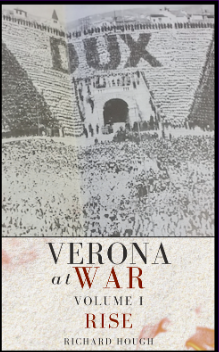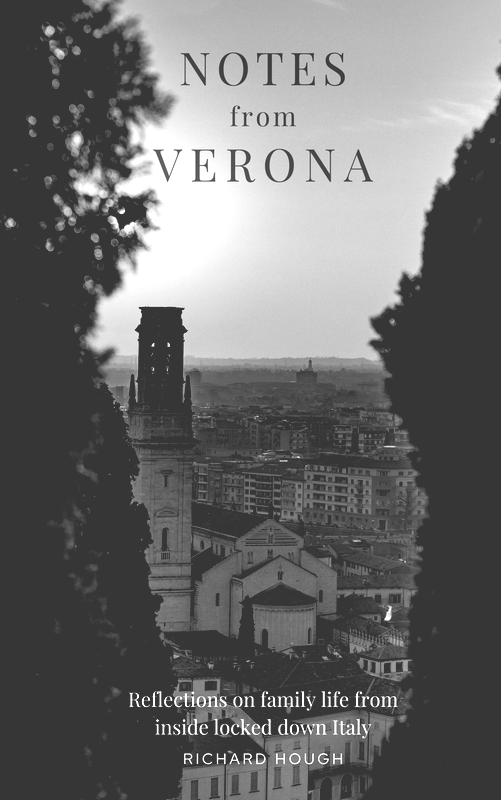|
Last Saturday afternoon, I went to a literary event at a local Veronese historical society. It seemed like a welcome opportunity for a civilised afternoon of informed discussion, a chance to discuss a fascinating period in Italy’s history with some like-minded enthusiasts in a convivial and collegiate atmosphere. The joint meeting of the Istituto Veronese per la storia della Resistenza e dell’etå contemporanea (IvrR) l’Associazione nazionale partigiani d’Italia (ANPI) and l’Associazione nazionale perseguitati politici italiani antifascisti (ANPPIA) didn’t quite turn out as I had expected! Now, I worked for 10 years at the Scottish Parliament and I’ve been to my fair share of public meetings, including, most regrettably, an annual general meeting of allotment holders (yes, held in a shed!), but never before have I attended a meeting where the chair has so completely lost control of proceedings... ------------------------- For Italy, the latter part of the Second World War was, above all, a civil war. A brutal civil war, played out in the hills, towns and villages of the north. Red against black, pro-German against anti-German, monarchist against republican, pro-Mussolini against anti-Mussolini, fascist against communist. With neither shared objectives nor a unified organisational structure, even the resistance fighters were far from a homogenous group (although a centralised control structure eventually emerged). By the end of October 1944, there were nearly 400,000 German troops in Italy, with all the accompanying brutality that this implied (including the presence of the SS and the ‘cleansing and destruction’ of the Jewish population). Those living in northern Italy had effectively been partitioned into the Third Reich. Civilian losses were over 150,000 (compared to 40,000 in the United Kingdom). Large numbers in northern Italy were starving or close to starvation. ----------------------------- The book being discussed at the literary event was “Non era una donna, era un bandito”: Rita Rosani, una ragazza in guerra by Livio Isaak Sirovich. Avid readers of this blog will remember that Rita Rosani was a 23 year old Jewish teacher turned partisan who was killed in the hills to the north of Verona by the German-Italian fascist militia (see: A school called Rosani). The book’s title refers to a discussion that is said to have taken place between a fascist soldier and his commander just after Rosani was killed: “And now what are we going to do, you’ve just killed a woman”. The reply, “she wasn’t a woman, she was a bandit”. The meeting started off conventionally enough, with some interesting historical context and a resumé of the author’s background, but the constant buzz of conversation, which on several occasions, compelled the chair to plead for silence, and the sporadic sound of clandestine mobile phone use should have alerted me to the fact that the standard rules of etiquette to which I am accustomed at public meetings would not necessarily apply here! The headline speaker was the book’s author, Livio Isaak Sirovich. Thankfully, his detailed and thought provoking presentation was listened to with both interest and respect. It was only when the chair invited questions from the floor that things really began to liven up. Enter centre stage what can only be described as a triumvirate of angry old men. There followed a succession of long-winded and venomous rants, the precise relevance of which was not entirely clear (to me anyway). From the last of these contributors, the chair was unable to reclaim the microphone, far less re-establish order in the room. Exasperated, he was left with little option but to call proceedings to a rather abrupt halt. I later asked him if such behaviour was normal – his resigned look suggested that it was. My initial reaction was one of incredulity and disappointment that the event had been disrupted in this way. After some reflection, however, I have come to a rather different conclusion. Let me explain. Although 70 years have passed since this dark period in Italy’s history, the scars of fascist barbarity and Nazi invasion remain a source of pain. Many in the audience seemed to have some direct link with the events under discussion. Perhaps they were the son or daughter of a partisan. Perhaps they were from Monte Comun, the small village where Rosani was killed. Perhaps, like the book’s author, they were Jewish. There were even a few in the audience who seemed old enough to have witnessed events first hand. Perhaps. Terrible atrocities were committed by both sides (fascist and resistance). The fascist “March of Death” began on 12 August 1944 at Sant’Anna di Stazzema with the massacre of 560 men, women and children and concluded on 1 October at Marzabotto with the killing of 1,830 civilians. When the war finally ended, partisan reprisals were severe – at least 15,000 and possibly 30,000 fascists (and suspected fascists) were killed.
As James Holland observes in Italy’s Sorrow, his epic account of the Italian civil war: “The terrible rastrellamenti of the summer and winter of 1944-45 and the bloody reprisals at the end of the war are still the subject of debate and soul-searching in Italy”. This was certainly in evidence in Verona on Saturday afternoon. Holland concludes, “One day, Italy will be able to forget. But not quite yet.” |
AboutRichard Hough writes about history, football, wine, whisky, culture + travel and is currently working on a trilogy about wartime Verona.
|



